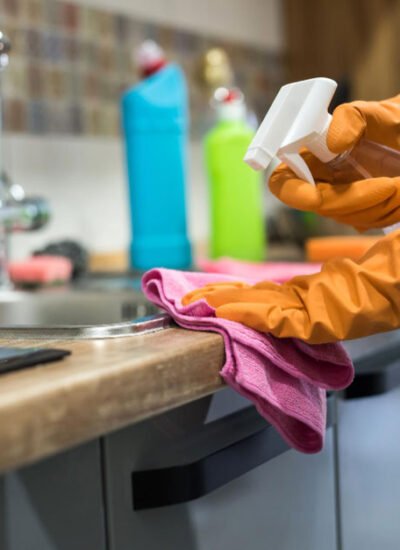The World Health Organization estimates that nearly one in ten people—approximately 600 million—fall ill from consuming contaminated food each year. Kitchen germs are a key source of such contamination, as bacteria such as Salmonella and E. coli are frequently found in ingredients like raw meat, fish, eggs, and unpasteurized milk. When cooking, chefs and home cooks alike may have small accidents such as spills, which, if left uncleaned, can potentially lead to cross-contamination. As such, it is essential to take a few simple steps to ensure your kitchen is germ-free.
Utilizing Clean Jars and Utensils
If you love organization and mason jars ignite your passion, chances are, you have a collection of mason jar canisters, dispensers, and drinking mugs, notes Dawson Property Management group. As is the case with all utensils used to store or consume food and drinks, regular cleaning is essential. The good news is that these items are easy and quick to clean. Just wash them with hot, soapy water and rinse them well, or sterilize them by boiling if you wish. A popular method is to immerse clean jars in a large pot of boiling water for around 10 minutes. Place a rack into the pot so that the bottles don’t touch the pot’s bottom surface, and ensure that the water covers the jars by about one inch. Let them dry upside down on a clean towel or rack, and avoid touching the rims or interior of clean jars to prevent contamination.
Daily Cleaning Strategies to Embrace
If you tend to conduct a deep cleaning of your kitchen once a week, consider making the shift to shorter, yet equally thorough, daily cleans. Every time you use the kitchen to prepare food, aim to wipe your countertops, stove tops, and standing kitchen equipment to prevent germ buildup. To preserve your family’s health, consider using green cleaning solutions, such as baking soda and vinegar, instead of strong, potentially toxic ingredients like bleach and nonionic surfactants. Conduct some research to find natural cleaning products that can make your work considerably easier. Recently, for instance, Chemical and Engineering News published information on Arxada wipes, which use citric acid (the same compound found in lemon juice) to clean surfaces effectively. Many companies are deeply committed to green cleaning. Just a few options you may wish to explore are Rosey (which produces all-purpose cleaners, cleaning wipes, scrubs, and more), Blueland (which creates water-free, low-waste cleaning formulas in refillable packaging), and Branch Basics (selling a concentrate that replaces dozens of cleaning products). In addition to wiping services, it is also important to regularly sweep and mop floors, and wash and clean while you cook to prevent pile-ups.
Deep Cleaning
Depending on how often you use specific equipment (including ovens, microwaves, and fridges), you will need to craft a cleaning schedule that ensures this equipment functions well and looks its best. If your oven has a pyrolytic (or self-cleaning) function, it can help make cleaning easier. However, even traditional ovens can be easily cleaned by covering any greasy areas with a simple solution made of baking soda and vinegar. After a few hours, wipe the grease away and repeat the process if necessary. Aim to create a schedule for deep cleaning each major piece of equipment, as the frequency of cleaning will depend significantly on how often you use each item.
Embracing Smart Organization
The tidier your kitchen is, the easier it will be to clean it thoroughly, as you will be able to reach more surfaces more effectively, without the necessity of moving or lifting clutter. To make your organization tasks easier, ensure your kitchen has enough storage space. Even if you have a small kitchen, you can boost its organizational efficiency by taking time to plan where different items (including pots and pans, utensils, and equipment) will go. Consider how your kitchen is organized right now. Are the items you use most often accessible? Is there a more efficient way to position your items in your storage furniture? Are there items, such as unusable pans or ingredients, that have been taking up space but are never used? You can also make up for a small space by investing in storage solutions such as drawer dividers, spice racks, and pot organizers.
Keeping your kitchen sparkling clean is no small feat, but it can be achieved through regular and deep cleaning. Consider reorganizing your space if necessary to make cleaning easier. Finally, aim to use green cleaning products that reduce toxicity in your home, clean effectively, and prioritize your family’s health.





Leave a Reply